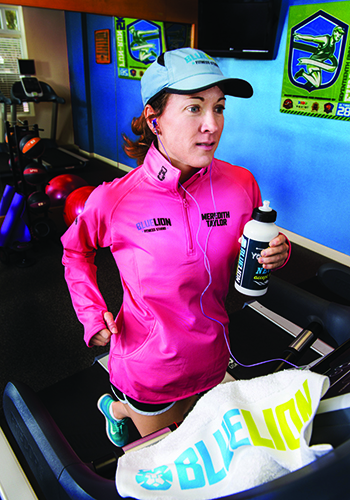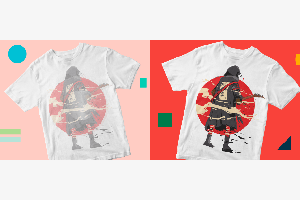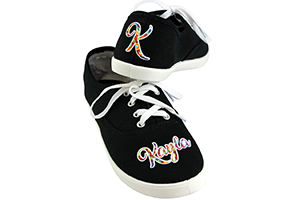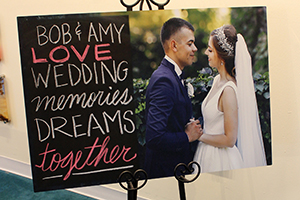April 18, 2016
Modern sublimation technology has made it easy to enter the world of digital apparel decorating. New advances in sublimation printing systems have yielded high-definition (HD) printing quality, a wider range of stunning colors, faster printing speeds and simplified graphics setups. In addition, equipment prices have remained low enough that startup costs are affordable, with apparel-friendly sublimation printers starting at about $1,650.
Sublimation is unique in that it involves inks that bond to the fabric fibers at a sub-surface level, rather than to the surface as most other apparel decoration inks do. In fact, the latter rely on a chemical additive called a binder to adhere to fabric. Sublimation relies on molecular bonding to attach and recolor the fabric’s fibers, resulting in an image that will not crack, peel or fade when washed. Therefore, sublimation is ideal for products such as team apparel, which undergoes a lot of physical stress and numerous washings in its lifetime.
On the surface, sublimation would appear to be the ultimate apparel decoration solution, but like everything else, it is not a “one-size-fits-all” application. Key factors that must be addressed when considering sublimation include fiber content, fabric color and image color.
Blank Apparel Fiber Content
Because of the chemistry involved in the sublimation process, it will only bond with polymers and polyester. Thus, it will not work for fabrics such as cotton, bamboo, wool etc.
Will it work for blends? Well, that depends on the fabric combination. In terms of poly/cotton blends, sublimation definitely will work. However, the result will be a faded or “retro” look, which can be advantageous in certain markets. The general rule of thumb with a blend is that at least 50% of it must be polyester and the remaining fibers must be able to withstand about 400˚F on the heat press.
Because 100% polyester is the best fiber choice, the natural assumption is that any polyester product can be sublimated, which is not true. Sometimes certain chemicals are added to polyester garments during the manufacturing process that can inhibit sublimation. For example, some (but not all) antimicrobial coatings have been shown to interfere with sublimation. Thus, remember to test a product before you make any assumptions about whether it can be decorated.
Fabric Color and Sublimation Decorating
White garments are the easiest to sublimate. With CMYK printing (which is what sublimation uses), there is no combination of base color inks that can produce the color white. Thus, all white areas are left “open” during printing. In the case of an image being applied to a white shirt, the open areas allow the color of the shirt to show through, creating white.
But if the same image is applied to a yellow shirt, the yellow color will be visible where white should be. Thus, white is considered the best apparel color for sublimation, but you can print on light-colored garments, provided you don’t need the color white within the image.
With colored apparel, there is another concern. Apparel dyes are heat set to ensure colorfastness when the garment is washed. However, if the heat-set value was considerably less than 400˚F, the shirt may fade in the area where the heat press makes contact during sublimation.
It also should be noted that neon fabrics usually will turn brown if heat temperatures are greater than 300˚F during application. That is because of the chemicals (called brighteners) that were added to the fabric dye.
The bottom line is you should test apparel before assuming it will sublimate properly.
Image Color and Sublimation Printing
Apparel sublimation has two different application processes—spot printing and allover printing (AOP).
Spot printing is the most common process. It involves applying a logo or graphic to a specific location on the garment. Typically, this is done with a desktop printer. The image is printed onto a single sheet of sublimation transfer paper and applied with a heat press. Upon completion, the transfer paper is removed and discarded.
Desktop printers are categorized by maximum media size, which refers to the largest paper size it can process. For example, the Virtuoso SG800 can handle a maximum paper size of 11″ x 17″ in its standard configuration. However, printers cannot print to the edge of the paper, so the largest image size will be slightly smaller than the paper size, typically about a ½-inch on all four sides. Thus, the maximum image size for this unit is about 10″ x 16″. This printer also can be expanded to 13″ x 19″ media with the addition of an optional bypass tray.
The heat press for spot printing must be slightly larger than the maximum media size produced with the printer. For example, with a maximum media size of 11″ x 17″, a 16″ x 20″ heat press would be ideal, not a 16″ x 16″ model.
AOP is on a totally different level than spot printing. The concept is to completely cover the shirt from top to bottom and side to side with ink. That could mean large or multiple graphics, or just solid color.
You theoretically can print white without white ink. For example, if you need a black shirt with white letters, it can’t be done with spot sublimation because there is no white ink. But with AOP sublimation, you start with a white shirt, then create a transfer that is all black except for the white letters, which are left as areas with no color (no ink). When you apply the transfer to the front of the shirt, it recolors the shirt to be solid black, except for where the letters are, which end up being white because of the shirt color.
This requires equipment that is much larger than that used for spot sublimation. Think about the width of a shirt — including the sleeves — stretched out. That is the image size you will need to print and press onto the shirt. Thus, you probably need a roll-feed printer that is at least 44 inches wide and a heat press that can handle that kind of image size. Both of these are substantially higher in cost than a desktop sublimation system.
Sublimation has great possibilities when it comes to apparel decoration. It’s just a matter of matching the correct equipment to the corresponding application. It doesn’t work for everything, but it can provide awesome results for the applications that make sense.
Award-winning author and speaker Jimmy Lamb has more than 20 years of apparel decoration experience. He is manager of communications for Sawgrass Technologies, Charleston, SC. This article was updated April 19, 2023.
April 12, 2023 | Sublimation
As you work toward becoming an experienced dye-sublimation apparel, general merch or customized promotional items decorator, you may come across one or more obstacles, like your transfers coming out blurry, dull or faded.
FULL STORY
June 1, 2022 | Sublimation
How many times have you wished that you could sublimate a product that wasn’t polymer-based or polymer-coated.
FULL STORY
October 8, 2021 | Sublimation
I think the philosophy of lagniappe should be taught at every school and practiced by every business. A French word meaning “unexpected extra gift,” lagniappe often is used in Louisiana. In fact, sublimation decoration is a fantastic example of this.
FULL STORY




